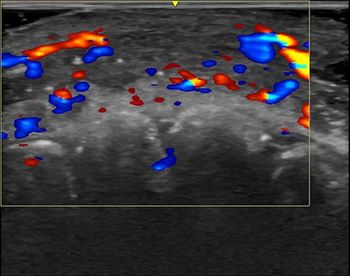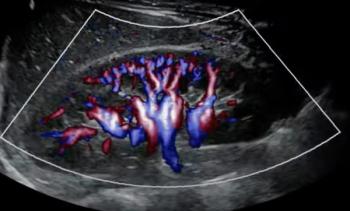
Xtria makes splash in PACS with new contracts
Three months after adopting a new name and launching a more integrated approach to its information technology businesses, Dallas-based Xtria (formerly a division of Kaneb Services) has won two major U.S. PACS contracts.Xtria was selected by Burlington,
Three months after adopting a new name and launching a more integrated approach to its information technology businesses, Dallas-based Xtria (formerly a division of Kaneb Services) has won two major U.S. PACS contracts.
Xtria was selected by Burlington, MA-based Lahey Clinic Medical Center in August to design, implement, integrate, and support a $10 million digital imaging and telemedicine upgrade. The three-phase project includes integrating PACS with the clinic’s RIS and HIS to make radiology images, patient data, and administrative information available on staff workstations throughout the enterprise and at various international locations. The goal is to increase throughput of imaging studies by 200% to 300%, according to Xtria.
The Lahey project comes less than a month after the company was awarded a joint contract with 3Di, a software and Internet technology company in Brea, CA, to design and implement an integrated RIS/PACS for the Los Angeles County Department of Health Services’ 45 hospitals and clinics. The 3Di/Xtria team will deliver a multiphase program to facilitate the RIS/PACS implementation and provide ongoing project management.
“The contract with L.A. County DHS is a prime example of a large, complex healthcare system that can achieve cost savings, operating efficiencies, and improved patient care through implementation of knowledge management systems,” said Roger Davis, vice president of the Healthcare Systems division.
While its name may be new, Xtria has been in the PACS business since 1997. The company first got into digital medicine through its InformaTech subsidiary, now part of Xtria’s healthcare systems business. InformaTech has been involved in DIN-PACS and other military healthcare projects, including work with the U.S. Army on a portable electronic medical record called the P-tag. This experience has led Xtria to develop a strong engineering staff that has become one of its core competencies, Davis said.
As Kaneb Services, the company has already worked with nearly every major modality, PACS, teleradiology, RIS, HIS, storage, and networking firm in healthcare and prides itself on being vendor-independent. This approach sets the company apart from its competitors in PACS and digital medicine, according to Xtria CEO Arthur Chavoya.
“We are a services company,” he said. “Our first approach is to look at people and processes and to pursue the best answer from the client’s perspective. We do some (technology) development on our own, but we are not leading with a technology answer, which typically fits one model.”
Xtria is also benefiting from the increasing push to make PACS a more integrated component of the hospital information infrastructure and the imaging layer for the electronic patient record. Committees composed of hospital administrators, IT reps, radiologists, cardiologists, PACS technicians, and referring physicians are increasingly making PACS buying decisions. Thus, Xtria’s people-oriented approach, which begins with consulting and planning, then moves on to design, integration, training, and even maintenance, has made the company more competitive in bidding for enterprise contracts.
“We intend to marry the technology with the knowledge,” Davis said. “We think this has been missing in many healthcare IT applications to date.”
The company plans to continue expanding its healthcare business, Chavoya said, including investing more internal resources in the healthcare division and making acquisitions.
Newsletter
Stay at the forefront of radiology with the Diagnostic Imaging newsletter, delivering the latest news, clinical insights, and imaging advancements for today’s radiologists.




























